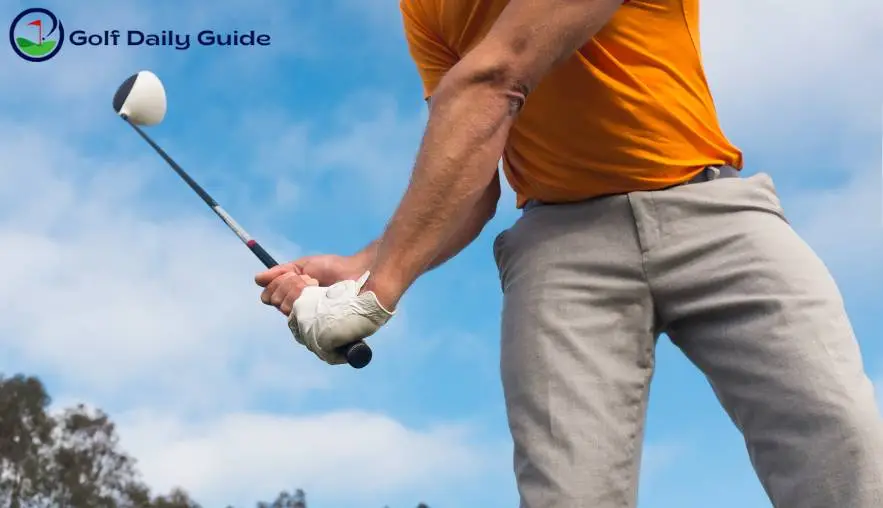Embarking on the journey to restore your golf clubs brings with it the expectation of improved performance, but the question lingers: How long for golf grips to dry?
In this blog, we discussed the important aspect of drying during post-grip installation. Understanding the wait period is essential to ensure a secure bond between the grip and club shaft.
Factors such as environmental conditions can affect this timeframe. Join us as we explore the effects of recommended duration and endurance on the longevity and performance of your golf grips.
Mastering this waiting game is the key to unlocking the full potential of your regripped clubs.
How long for golf grips to dry?
The drying time for golf grips largely depends on the type of grip and the adhesive used. Typically, it takes about 24 hours for the majority of grips to fully set and dry.
However, factors such as temperature and humidity can influence the drying process. In warmer and less humid conditions, grips may dry faster, while cooler and more humid environments can extend the drying time.
It’s crucial to follow the manufacturer’s recommendations for the specific grip and adhesive you’re using to ensure optimal drying and bonding.
Always allow sufficient time before using the club to prevent any grip slippage or issues during play.

Choosing The Right Golf Grips
Choosing the right golf grips involves considering factors such as how long they take to dry. It’s essential to select grips that dry quickly to ensure a firm and secure hold during your golf game.
Understanding The Importance Of Golf Grips
When it comes to improving your golf game, choosing the right golf grips is crucial. Golf grips are the only point of contact between you and the club, so it’s essential that they provide a comfortable and secure hold.
They not only affect your grip pressure but also play a significant role in your swing mechanics and shot accuracy.
By understanding the importance of golf grips, you can make an informed decision when selecting the best ones for your game.
Different Types Of Golf Grips
There are various types of golf grips available in the market, and each has its own unique characteristics. Here are some popular options:
- Overlapping Grip: Also known as the Vardon Grip, this is the most common grip used by golfers. It involves overlapping the little finger of the trailing hand on top of the index finger of the lead hand.
- Interlocking Grip: This grip is similar to the overlapping grip, but the little finger of the trailing hand is interlocked with the index finger of the lead hand. It provides added stability and control.
- Ten-Finger Grip: Also known as the Baseball Grip, this grip is suitable for individuals with weak wrists or small hands. All ten fingers are in direct contact with the club, providing a solid grip.
- Wrap Grip: This grip involves wrapping the hands around the club, creating a secure and comfortable feel. It is often chosen by players who prefer a larger grip size.
It’s important to try out different types of golf grips to find the one that feels most comfortable and suits your individual playing style.

Factors To Consider When Selecting Golf Grips
Selecting the right golf grips involves considering several factors. Here are some key things to keep in mind:
- Grip Size: The grip size plays a significant role in your grip pressure and overall feel. A grip that is too small can result in an increased grip pressure, which may negatively impact your swing. Conversely, a grip that is too large can decrease your ability to release the club smoothly. Experiment with different grip sizes to find the perfect fit.
- Grip Material: Golf grips are commonly made from rubber, synthetic materials, or cord. Each material offers a different texture and feel. Rubber grips are the most popular choice due to their affordability and durability. Synthetic grips often provide a softer feel, while cord grips offer excellent traction in wet conditions.
- Weather Conditions: Consider the typical weather conditions you play in when choosing golf grips. If you frequently play in wet or humid conditions, opt for grips that provide excellent moisture resistance and maintain their tackiness.
- Playing Style: Your playing style and swing mechanics can influence the type of golf grips that are best for you. For example, players with a fast swing speed may benefit from grips that offer more control and stability.
By taking these factors into account, you can narrow down your options and select the golf grips that will enhance your performance on the course.
Why Do Golf Grips Need To Dry?
Proper maintenance of your golf grips is essential to ensure a consistent and reliable performance on the golf course.
When golf grips become wet, they can significantly impact the feel, control, and overall performance of your golf club.
Therefore, it is crucial to understand why golf grips need to dry to maintain their effectiveness. For this I discussed, How long for golf grips to dry?
The Consequences Of Wet Golf Grips
When golf grips are wet, they can become slippery, causing instability during the swing and leading to inconsistent shots.
Additionally, moisture can lead to the growth of mold and mildew, deteriorating the grip’s texture and affecting your ability to maintain a firm hold on the club.
Furthermore, wet grips can compromise the adhesion of grip tape, resulting in the grip twisting or shifting during your swing, causing misalignment and mishits.
Benefits Of Dry Golf Grips
Having dry golf grips offers various benefits, including improved traction, better comfort, and enhanced durability.
Dry grips provide a reliable and secure hold, promoting more accurate and consistent swings, ultimately improving your overall performance on the course.
How to Dry Golf Grips Faster?
To expedite the drying process of golf grips, consider a few strategies. Firstly, place the clubs in a warm and dry environment, as heat accelerates the drying time.
You can use a hairdryer on a low heat setting to speed up the process, but maintain a safe distance to avoid damage.
Additionally, ensure proper ventilation to reduce humidity, aiding in quicker drying. Placing the grips in front of a fan can enhance airflow and facilitate faster evaporation.
While it’s essential not to rush, these methods can help shorten the drying time, allowing you to get back on the course sooner with securely set golf grips.
Quick-drying Techniques For Golf Grips
When you need to get back on the golf course quickly, waiting for your grips to dry can be a real challenge.
Luckily, there are several quick-drying techniques for golf grips that can help you get back to playing in no time.
Whether you’re using a grip dryer, grip sprays, or applying heat, these methods can significantly reduce the drying time of your golf grips. Let’s take a look at each technique in detail.
Using A Grip Dryer
A grip dryer is a convenient tool specifically designed to speed up the drying process of golf grips. For this I discussed, How long for golf grips to dry?
It utilizes warm air to quickly evaporate any moisture, allowing you to regain a secure grip on your clubs in no time. Simply place the grip dryer over your grips and switch it on to start the drying process.
Utilizing Grip Sprays
Grip sprays are specially formulated to accelerate the drying of golf grips. These sprays often contain fast-drying agents that help to eliminate moisture and quickly set the grips in place.
To utilize grip sprays, thoroughly coat the grips with the spray and allow them to air dry for the recommended amount of time.
Applying Heat To Speed Up Drying Time
Applying heat is an effective method to speed up the drying time of golf grips. You can use a hairdryer on a low heat setting or leave your grips in a warm, well-ventilated area to expedite the drying process.
However, be cautious not to expose the grips to excessive heat, as it may damage the material.
Best Practices For Maintaining Dry Golf Grips
Proper maintenance of your golf grips is essential to optimize your performance on the course and prolong the lifespan of your equipment.
One key aspect of this maintenance is ensuring your golf grips remain dry. When your grips are dry, you can maintain a secure hold, prevent slipping, and enhance your overall swing control.
In this article, we will discuss the best practices for maintaining dry golf grips to help you improve your game and keep your equipment in top condition.
Proper Cleaning And Maintenance
Regular cleaning is crucial to keep your golf grips dry. Here are some steps you can follow to effectively clean and maintain your grips:
- Wipe the grips down with a damp cloth after each round to remove any dirt, sweat, or debris that can cause moisture buildup.
- Dry your grips thoroughly after cleaning to prevent any residual moisture from lingering.
- To deep clean your grips, mix a mild soap or detergent with warm water and use a soft brush to scrub the grips gently. Rinse them thoroughly and dry them completely before using them again.
- Consider using grip cleaning solutions or sprays specifically designed for golf grips – these products can remove stubborn dirt and grime effectively.
Storing Golf Clubs In Dry Environments
Another important practice to maintain dry golf grips is storing your clubs in a dry environment. Here are some tips to help keep your equipment moisture-free when not in use:
- Store your golf clubs in a cool, dry place – avoid areas with high humidity or direct sunlight.
- Use a golf bag with individual club compartments to prevent grips from rubbing against each other and potentially retaining moisture.
- Consider using a dehumidifier or silica gel packets in your golf bag or storage area to absorb any excess moisture.
Replacing Worn Golf Grips
Over time, golf grips can become worn, losing their texture and effectiveness. When this happens, it’s important to replace them promptly to maintain dry grips and optimal performance. Here are a few signs indicating that your golf grips need replacement:
- If you notice cracks, splits, or peeling on the surface of the grip, it’s time to replace it.
- When the grip feels smooth or slippery to the touch, it has likely worn out and should be changed.
- If you find it difficult to maintain a consistent hold on the club, it may be due to worn or deteriorated grips.
Regularly checking the condition of your golf grips and replacing them when necessary will ensure you always have dry and reliable grips to enhance your golfing experience.
Why You Should Wait for the Golf Grip to Dry?
Waiting for the golf grip to dry is crucial for a secure and long-lasting bond. Allowing sufficient drying time ensures that the adhesive establishes a strong connection between the grip and the club shaft.
Rushing this process may lead to a weak bond, causing the grip to slip or twist during play. Patience during drying prevents premature wear and tear, providing a consistent and reliable feel to your golf clubs.
Additionally, waiting for the grip to dry thoroughly helps maintain the club’s balance and stability, contributing to improved performance and overall control during swings.
Taking the time for proper drying ensures a better and more durable golf grip installation. For this I discussed, How long for golf grips to dry?
How Long Before New Golf Grips Can Be Used?
After installing new golf grips, it’s advisable to wait at least 24 hours before using the clubs.
This waiting period allows the adhesive used during the installation process to fully cure and ensures a secure bond between the grip and the club shaft.
While some grips may feel dry to the touch sooner, the full curing time is essential for optimal performance and durability. Rushing to use the clubs before the grips have completely set may lead to slippage or twisting during play.
Patience in allowing the recommended drying time ensures that your new golf grips provide a reliable and stable grip during your rounds.
Frequently Asked Questions On How Long For Golf Grips To Dry
How Long Does It Take For Golf Grips To Dry?
Golf grips typically take around 24 hours to dry completely. It is essential to give them enough time to dry to ensure a secure and comfortable hold on the club.
Rushing the drying process can lead to grips that are not properly adhered, affecting your swing and overall game performance.
Can I Speed Up The Drying Process Of Golf Grips?
While it is best to allow golf grips to dry naturally, you can use a hairdryer on a low heat setting to speed up the process. However, be cautious not to use excessive heat as it can damage the grips.
Patience is key to ensure the grips dry thoroughly and provide optimal performance on the golf course. For this I discussed, How long for golf grips to dry?
What Happens If I Use Golf Grips Before They Are Fully Dry?
Using golf grips before they are fully dry can cause them to not adhere properly to the club, leading to slipping or twisting during your swing.
This can greatly affect your accuracy and control. It’s essential to allow the grips enough time to dry completely to ensure a secure and reliable grip on your clubs.
How Can I Tell If My Golf Grips Are Fully Dry?
To check if your golf grips are fully dry, lightly touch the surface of the grips. If they feel slightly tacky or leave any residue on your fingers, they are not yet dry.
Wait until they feel completely dry and have a smooth texture before using them on the golf course. Proper drying ensures optimal grip performance.
Conclusion
Understanding the important drying time for golf grips is paramount to optimal performance on the course. Although the ideal duration is about 24 hours, factors such as temperature and humidity can affect the drying process.
Patience is essential during this period to ensure that the glue forms a strong bond, preventing grip slippage or twisting during play. Rushing this stage can compromise the longevity and overall effectiveness of the grip.
By allowing the recommended drying time, golfers can confidently handle clubs with securely attached grips, increasing control and stability in their swings.
So, taking this time to properly dry ultimately contributes to a more enjoyable and reliable golf experience.












